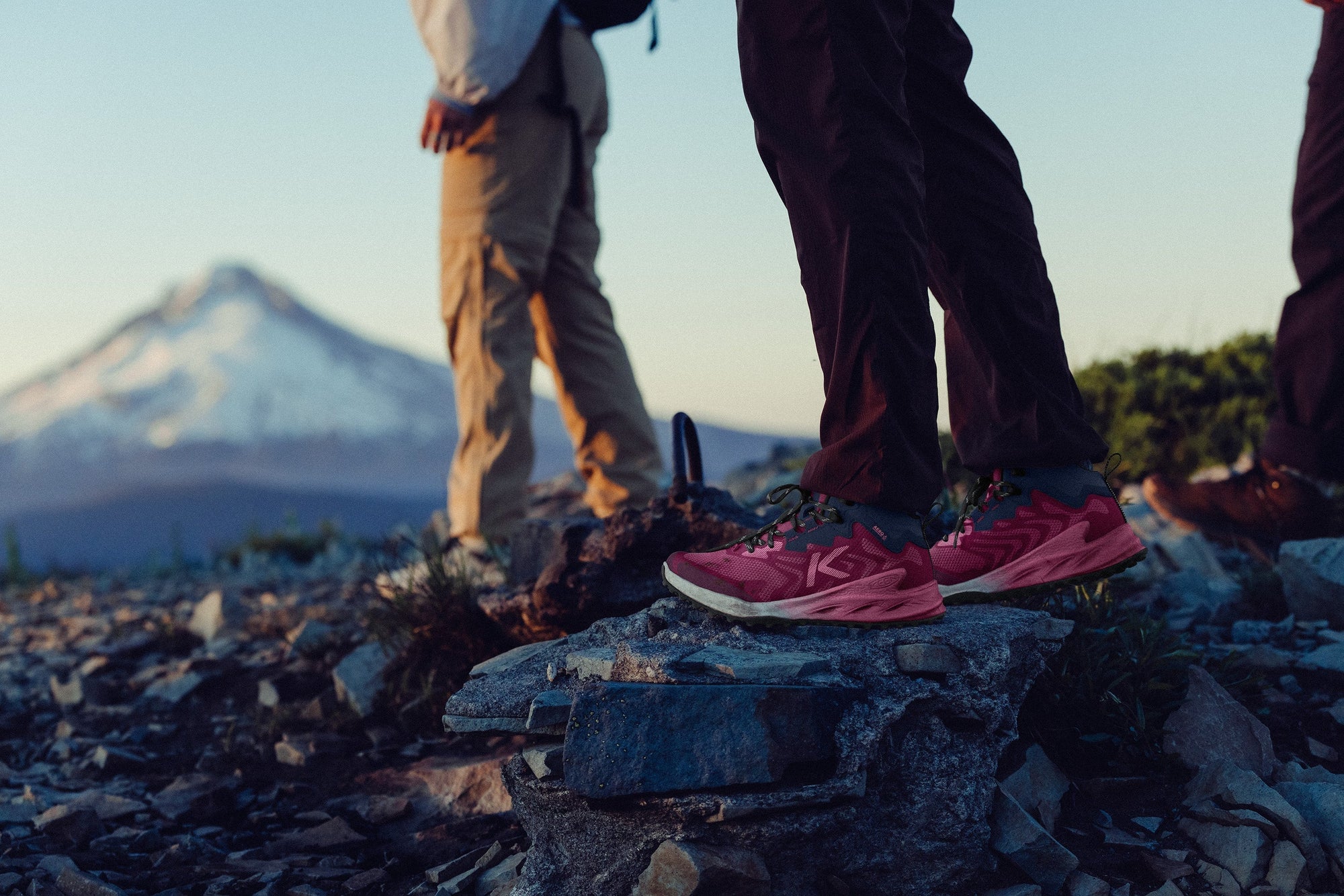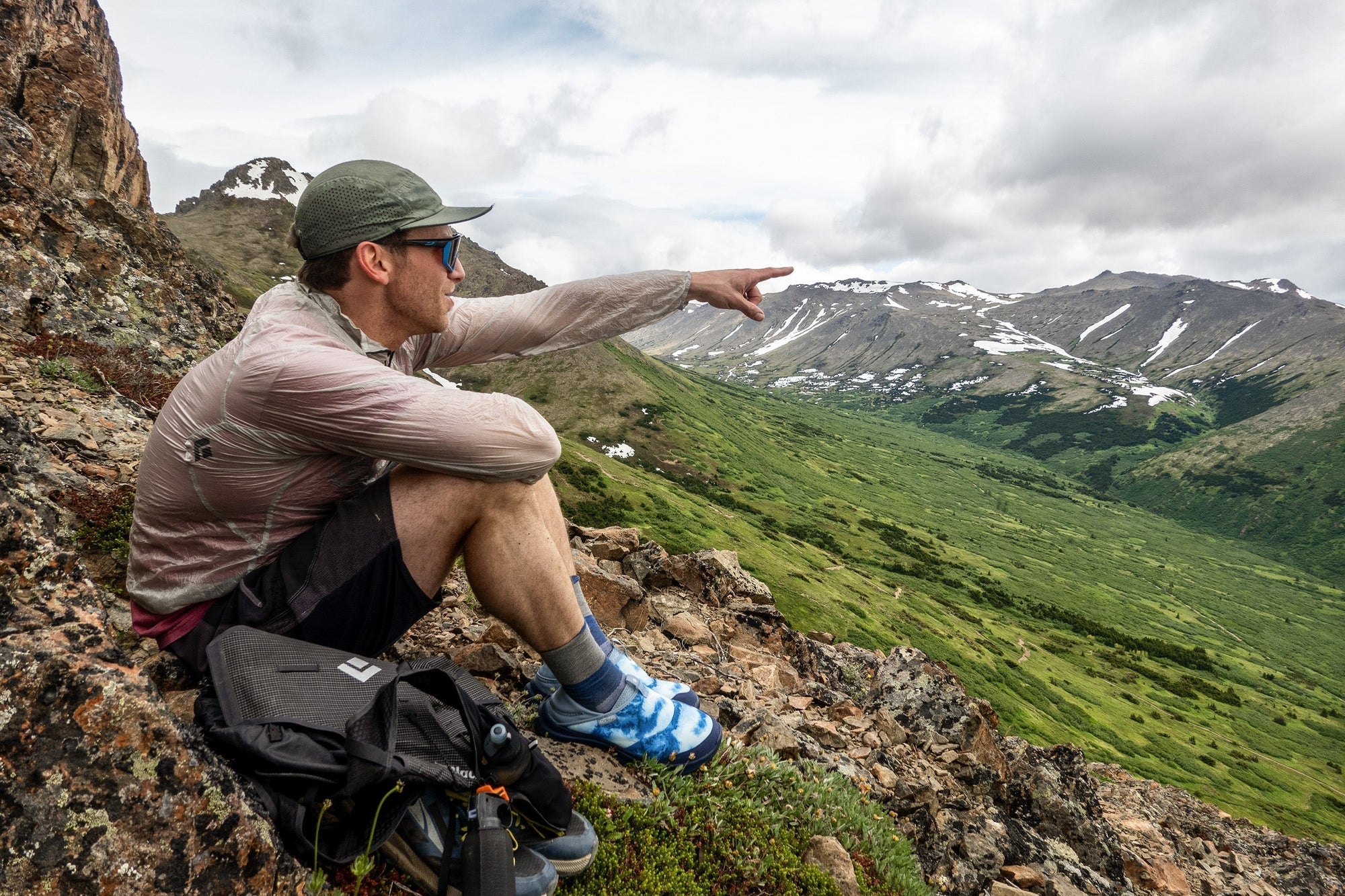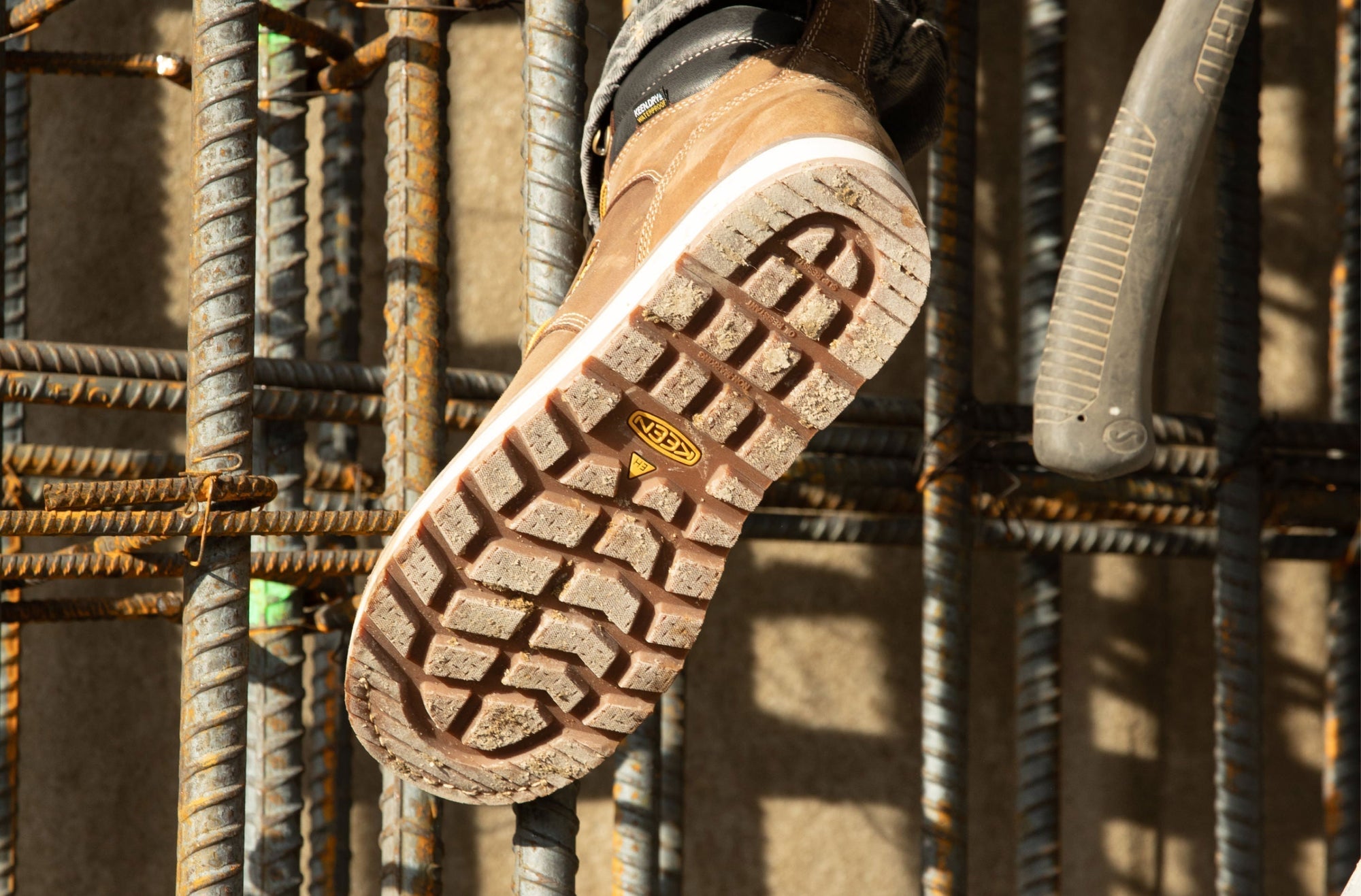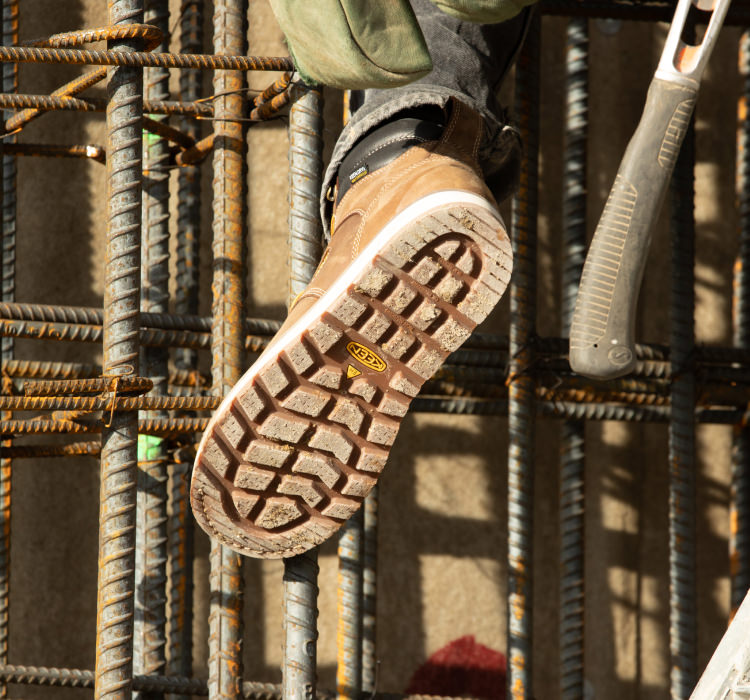We see all kinds of footwear out on the trails. (Probably because we are shoemakers and tend to look at what people are wearing on their feet – in a totally curious, non-judgy way.)
There is no one right shoe to wear – because each of us has one-of-a-kind feet. We think folks should get out there in whatever shoe makes them feel the most confident and comfortable. But when it comes to long-distance hiking, is there a best type of boot or shoe to wear for longer treks?
Traditional hiking boots would have been the obvious answer in the past. But in the last 10-15 years, more and more people are choosing to wear trail running shoes or light hiking shoes on longer treks like the Appalachian Trail and Pacific Coast Trail.
Boots vs. Shoes
Hiking boots offer more support and protection, while athletic shoes keep you lighter on your feet. Ultimately it comes down to personal preference. Here are some things to consider:
|
Feature
|
Hiking Boots
|
Fast & Light Shoes
|
|
Outsole
|
Tend to be rugged with thicker lugs
|
Tend to be more athletic
|
|
Upper
|
Built to be durable, weather-resistant, and protect against trail hazards
|
Designed to be lightweight and breathable
|
|
Toe protection
|
Beefier
|
More streamlined
|
|
Weight
|
Tend to be heavier
|
Are often lighter overall
|
The Pros of Rugged Hiking Boots
Traditional hiking boots are typically ready for all the elements – stumps, roots, branches, loose rock, rain, and occasional snow patch – thanks to ankle protection, water-repellency or waterproofness, and a beefier sole. They are also usually reinforced with mud guards and have heavy-duty lace eyelets and hooks.
When you’re carrying a fully-loaded backpack, you might appreciate the added stability and support of a hiking boot. Everyone needs a different level of support to feel comfortable, and only you know what feels right for you. In general, you can expect hiking shoes and boots to offer a more supportive feel.
And the last thing to consider is longevity. A well-made pair of hiking boots can last well over 10 years of hiking – especially if the sole is fused to the upper without glue to prevent delamination.

Here are some of our faves:
• Targhee IV – our iconic hiker with room for your toes plus KEEN.FUSION for zero sole separation over time.
• Pyrenees – classic all-leather European hiking boot
• Durand II – American Built hiking boot with KEEN.FUSION durability
The Pros of Fast & Light Shoes
The most obvious benefit of trail runners and athletic hikers: they’re lighter. That’s less weight on your feet over miles and miles of hiking. Athletic hikers feel more flexible, less rigid. As a result, you feel more agile on the trail.
The cushioning in athletic shoes tends to be lighter and springier, which is a welcome feeling on your fourteen-thousandth step of the hike. Midsoles are softer and more flexible, offering a balance of shock absorption and ground feel.
And the last thing to consider is versatility. Fast & light hikers and trail runners can be worn for your shorter, everyday trail adventures close to home. And even around town. They are also easier to pack, in case your long-distance hike involves a long-distance flight to get to the trailhead.

Here are some of our faves:
• Zionic NXT hiking shoe – agile hiker with longer-lasting, high-rebound cushioning.
• Seek trail runner – our ultra-durable trail runner that takes comfort farther.
• 450 Dirt hiking shoe – featuring KEEN.CURVE sole for a feeling of forward momentum.
Best of Both Worlds
If you still can’t decide between a bulkier boot and a more athletic shoe, get a hybrid of the two with a hiker sneaker boot. The Hightrail waterproof hiking boot and NXIS EVO waterproof hiking boot give you that light and fast feel with the protection of a boot.










